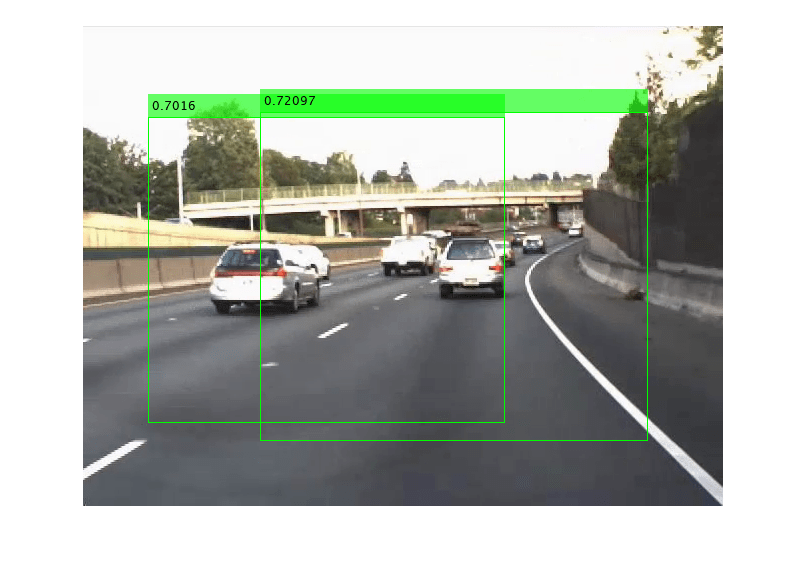detect
Detect objects using SSD object detector configured for monocular camera
Syntax
Description
bboxes = detect(detector,I)I using an SSD (singe shot detection
convolutional neural networks) multibox object detector configured for a monocular camera.
The locations of objects detected are returned as a set of bounding boxes.
When using this function, use of a CUDA®-enabled NVIDIA® GPU. The GPU reduces computation time significantly. Usage of the GPU requires Parallel Computing Toolbox™. For information about the supported compute capabilities, see GPU Computing Requirements (Parallel Computing Toolbox).
[___,
also returns a categorical array of labels assigned to the bounding boxes, using either of
the preceding syntaxes. The labels used for object classes are defined during training
using the labels] = detect(detector,I)trainSSDObjectDetector function.
[___] = detect(___,
detects objects within the rectangular search region specified by
roi)roi. Use output arguments from any of the previous syntaxes. Specify
input arguments from any of the previous syntaxes.
detectionResults = detect(detector,ds)read function
of the input datastore.
[___] = detect(___,
specifies options using one or more Name,Value)Name,Value pair arguments. For
example, detect(detector,I,'Threshold',0.75) sets the detection score
threshold to 0.75. Any detections with a lower score are
removed.
Examples
Input Arguments
Name-Value Arguments
Output Arguments
Version History
Introduced in R2020a
See Also
Apps
Functions
configureDetectorMonoCamera|selectStrongestBboxMulticlass|evaluateDetectionMissRate|evaluateDetectionPrecision
Objects
Topics
- Object Detection Using SSD Deep Learning
- Datastores for Deep Learning (Deep Learning Toolbox)
